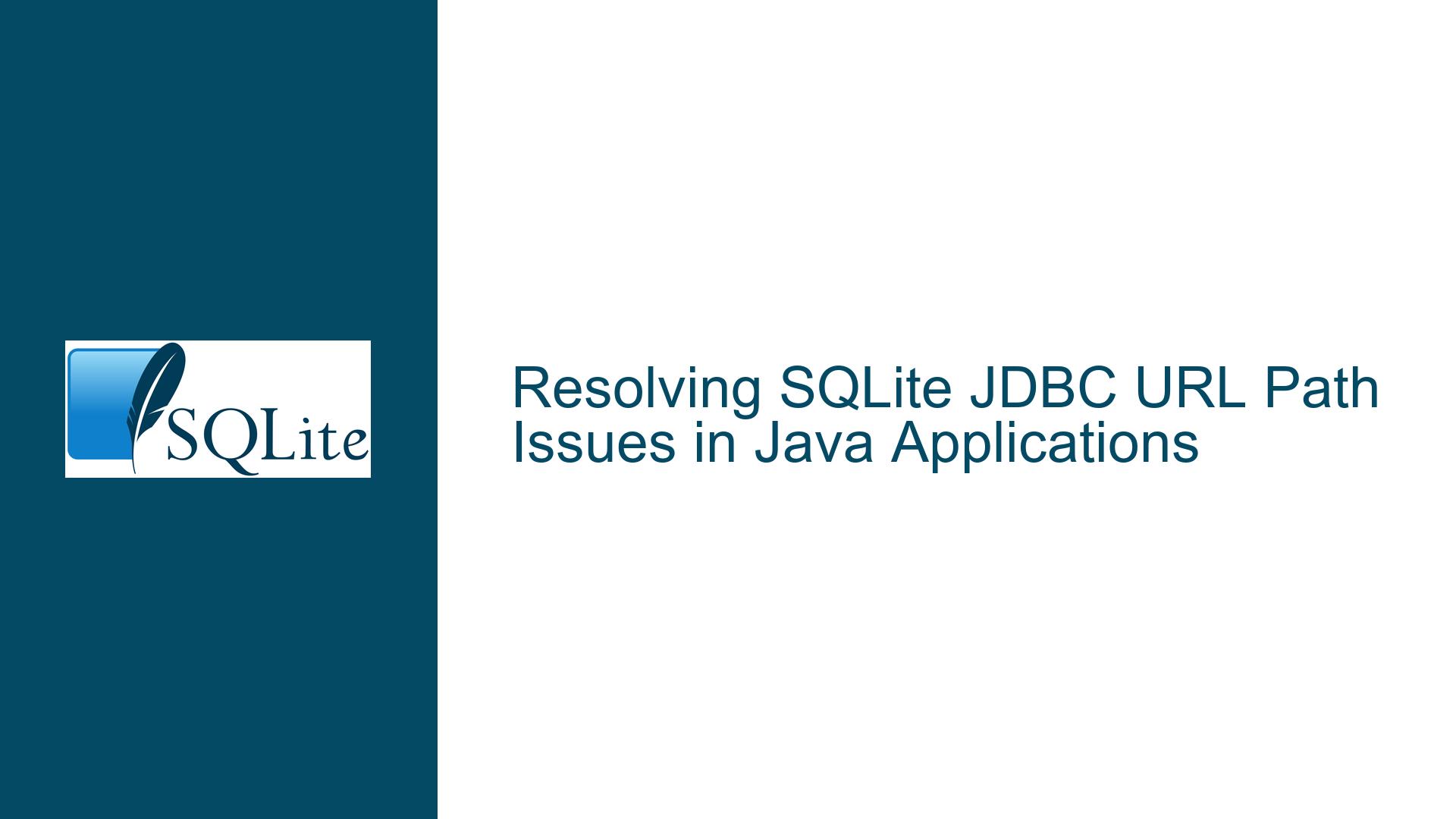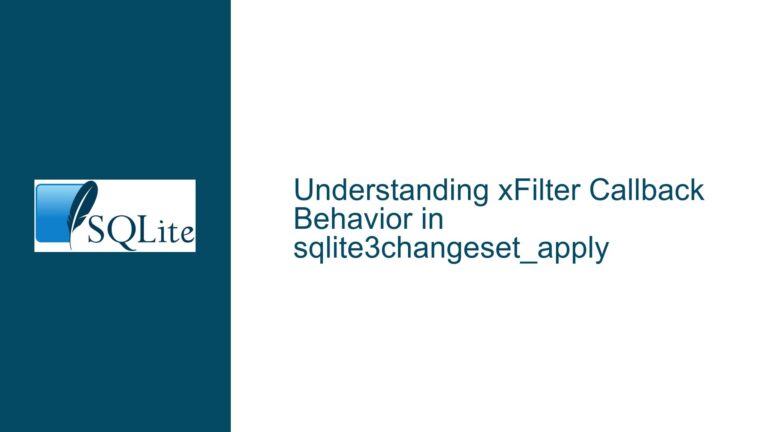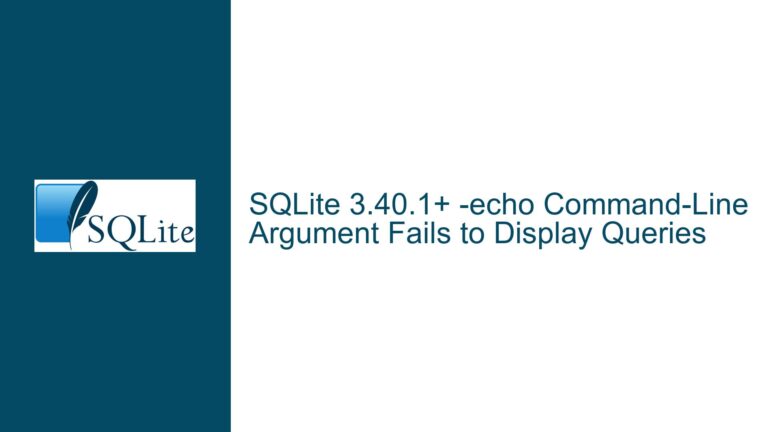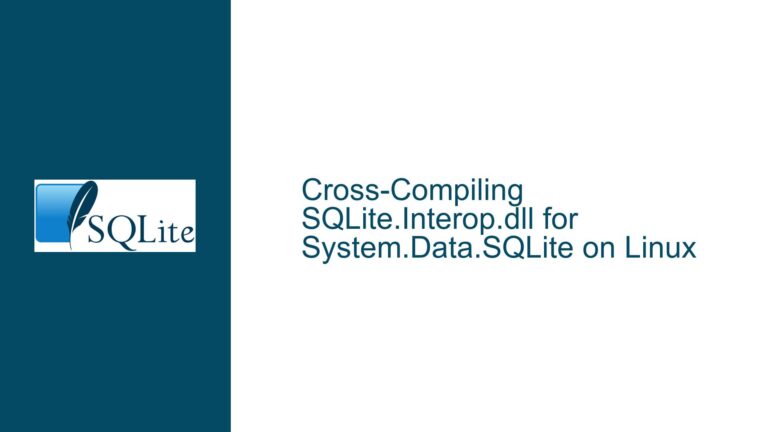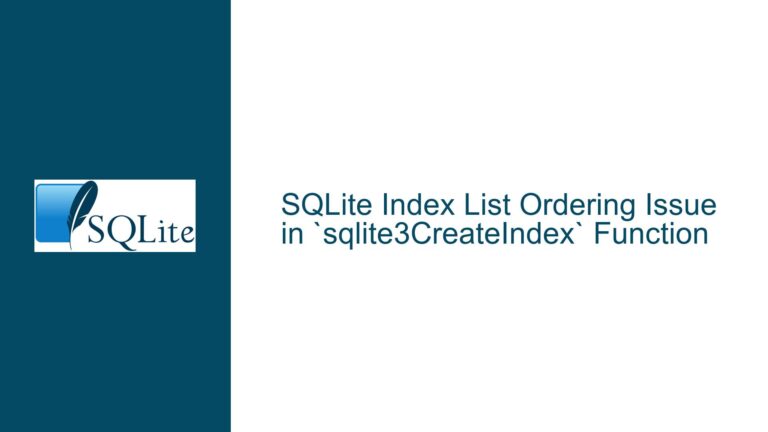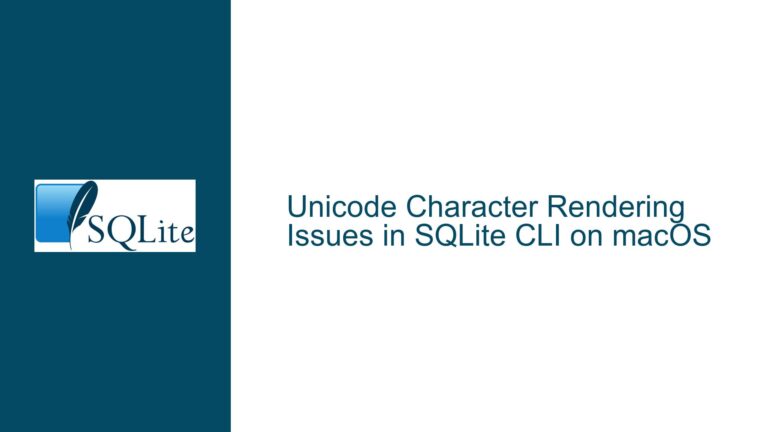Resolving SQLite JDBC URL Path Issues in Java Applications
Understanding the JDBC URL Path Discrepancy in SQLite Connections
When working with SQLite databases in Java applications, establishing a correct and consistent database connection is crucial. A common issue arises when developers encounter discrepancies in the database connection behavior due to differences in the JDBC URL path formats. This problem often manifests when the application seems to be pointing to different databases depending on how the JDBC URL is constructed.
The core of the issue lies in the interpretation of the JDBC URL by the SQLite JDBC driver. The URL not only specifies the location of the database file but also determines how the file path is resolved at runtime. This becomes particularly important when the application is intended to be portable, such as when packaging the application into a JAR file. The discrepancy in database connections can lead to inconsistent data being accessed or modified, which can be perplexing and problematic for developers.
Exploring the Root Causes of JDBC URL Path Misinterpretation
The primary cause of the JDBC URL path discrepancy is the difference in how absolute and relative paths are handled by the SQLite JDBC driver. When an absolute path is used, such as jdbc:sqlite:E:\Laurent\Web-Eclipse\resource\resource\dataform.db, the driver directly accesses the database file at the specified location on the filesystem. This approach is straightforward but lacks portability, as the absolute path is tied to a specific filesystem structure.
On the other hand, when a relative path or a resource-based path is used, such as jdbc:sqlite::resource:resource/dataform.db, the driver attempts to resolve the path relative to the application’s runtime environment. This often means that the path is interpreted based on the location of the compiled classes or the JAR file, rather than the source code structure. In the case of the provided example, the path jdbc:sqlite::resource:resource/dataform.db resolves to E:\Laurent\Web-Eclipse\bin\resource\dataform.db during runtime, which is different from the intended E:\Laurent\Web-Eclipse\resource\resource\dataform.db.
Another contributing factor is the handling of path separators in different operating systems. Windows uses backslashes (\) as path separators, while Unix-based systems use forward slashes (/). The SQLite JDBC driver expects forward slashes in the JDBC URL, regardless of the operating system. Using backslashes in the URL can lead to incorrect path resolution, especially when the application is deployed on different platforms.
Comprehensive Troubleshooting and Solutions for JDBC URL Path Issues
To resolve the JDBC URL path discrepancy, it is essential to understand the nuances of path resolution in the SQLite JDBC driver and adopt best practices for constructing JDBC URLs. The following steps outline a detailed approach to troubleshooting and fixing the issue:
1. Verify the Runtime Environment and Classpath:
Before making any changes to the JDBC URL, it is crucial to understand the runtime environment and the classpath configuration of the application. The classpath determines where the application looks for resources, including the SQLite database file. Ensure that the database file is included in the classpath and that the path specified in the JDBC URL correctly references the file within the classpath.
2. Use Consistent Path Separators:
To avoid issues with path separators, always use forward slashes (/) in the JDBC URL, regardless of the operating system. This ensures that the URL is interpreted correctly by the SQLite JDBC driver on all platforms. For example, instead of using jdbc:sqlite:E:\Laurent\Web-Eclipse\resource\resource\dataform.db, use jdbc:sqlite:E:/Laurent/Web-Eclipse/resource/resource/dataform.db.
3. Leverage Resource-Based Paths for Portability:
If the goal is to package the application into a JAR file, using a resource-based path is a better approach. However, it is essential to ensure that the database file is correctly placed within the JAR file and that the path in the JDBC URL accurately reflects the file’s location within the JAR. For example, if the database file is located in the resource directory within the JAR, the JDBC URL should be jdbc:sqlite::resource:resource/dataform.db.
4. Debug Path Resolution at Runtime:
To diagnose issues with path resolution, add logging or debugging statements to the application to print the resolved path at runtime. This can help identify discrepancies between the intended and actual paths. For example, log the value of url before establishing the database connection to verify that it resolves to the correct location.
5. Consider Using a Configuration File:
To enhance flexibility and maintainability, consider externalizing the JDBC URL in a configuration file. This allows the path to be easily modified without changing the application code. The configuration file can be loaded at runtime, and the JDBC URL can be constructed based on the values in the configuration file.
6. Test on Different Platforms:
To ensure that the application works correctly on different operating systems, test the JDBC URL resolution on both Windows and Unix-based systems. This helps identify any platform-specific issues and ensures that the application is truly portable.
7. Handle Edge Cases and Error Scenarios:
Implement error handling to gracefully manage cases where the database file cannot be found or accessed. This includes checking for file existence, handling FileNotFoundException, and providing meaningful error messages to the user.
By following these steps, developers can effectively troubleshoot and resolve JDBC URL path issues in SQLite connections, ensuring consistent and reliable database access in their Java applications. The key is to understand the underlying mechanisms of path resolution, adopt best practices for constructing JDBC URLs, and thoroughly test the application in different environments.
